Related Research Articles

The Arab citizens of Israel are the country's largest ethnic minority. They are colloquially referred to in Arabic as either 48-Arabs or 48-Palestinians, denoting the fact that they have remained in Israeli territory since the Green Line was agreed upon between Israel and the Arab countries as part of the 1949 Armistice Agreements. According to several sources, the majority of Arabs in Israel now prefer to be identified as Palestinian citizens of Israel. International media outlets often use the term "Arab-Israeli" or "Israeli-Arab" to distinguish Israel's Arab citizens from the Palestinian Arabs residing in the Israeli-occupied territories. They are formerly, or are descended from, those Arabs who belonged to the British Mandate for Palestine through Palestinian Citizenship Order 1925. Speakers of both Arabic and Hebrew, they self-identify in a wide range of intersectional civic, national, and religious identities.
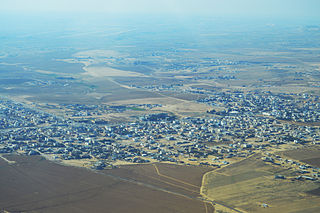
Kuseife or Kseifa is a Bedouin town in the Southern District of Israel. Kuseife was founded in 1982 as part of a government project to settle Bedouins in permanent settlements. In 1996 it was declared a local council, and in 2022 it had a population of 23,990.

Lakiya or Laqye is a Bedouin town in the Southern District of Israel. In 2022 it had a population of 16,011.
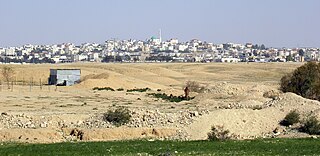
Ar'arat an-Naqab or Ar'ara BaNegev, previously called Aroer, is a Bedouin town in the Southern District of Israel. Its name stands for "the juniper tree in Negev". It is situated not far from the archaeological site of Aroer.

The Van Leer Jerusalem Institute (VLJI) is a center for the interdisciplinary study and discussion of issues related to philosophy, society, culture, and education. The Institute was established in order to create a body of knowledge and discourse and to give expression to the wide range of disciplines and opinions in Israel. The contribution of a core of renowned scholars facilitates the implementation of reforms and new approaches in various social spheres.

The Negev Bedouin are traditionally pastoral nomadic Arab tribes (Bedouin), who until the later part of the 19th century would wander between Hijaz in the east and the Sinai Peninsula in the west. Today they live in the Negev region of Israel. The Bedouin tribes adhere to Islam and many are loyal Israeli citizens. Some Bedouins voluntarily serve in the IDF.

Umm Batin is a Bedouin village in southern Israel. Located in the northern Negev desert, 12 km northeast of Beersheba and adjacent to the highway 60, it falls under the jurisdiction of al-Kasom Regional Council. In 2022 it had a population of 4,981.

Oren Yiftachel is an Israeli professor of political and legal geography, urban studies and urban planning at Ben-Gurion University of the Negev, in Beersheba. He holds the Lynn and Lloyd Hurst Family Chair in Urban Studies.

Tirabin al-Sana, also Tarabin, is a Bedouin village in the Negev desert in southern Israel. The village was built for the Tarabin tribe. Located near Rahat and Mishmar HaNegev, it falls under the jurisdiction of al-Kasom Regional Council. In 2022 it had a population of 1,294.
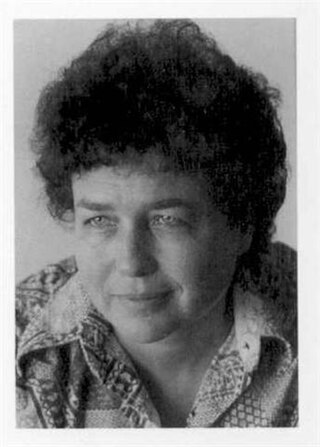
Ruth Kark is an Israeli historical geographer and professor of geography at the Hebrew University of Jerusalem. Professor Kark is a well-known researcher and expert in the field of the historical geography of Palestine and Israel.
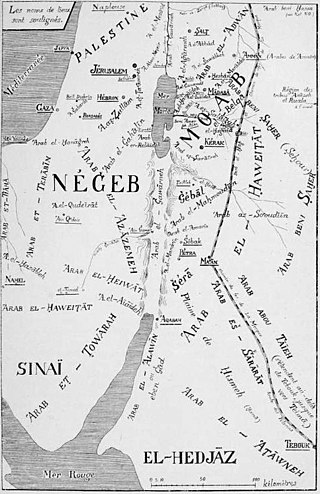
The Tirabin, were the most important Arab tribe in the Sinai Peninsula during the 19th century, and the largest inside Negev. Today this tribe resides in the Sinai Peninsula but also in Cairo, Ismailia, Giza, Al Sharqia and Suez, Israel (Negev), Jordan, Saudi Arabia and the Gaza strip. A township named Tirabin al-Sana was built in Israel in 2004 especially for the members of al-Sana clan from Al-Tirabin tribe.
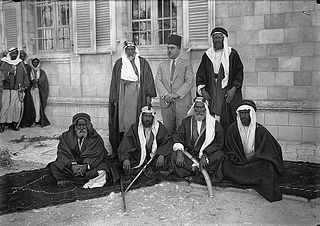
Al-Hanajira was one of the five principal Bedouin tribes inhabiting the Negev Desert prior to the 1948 Arab-Israeli War. Its territory stretched north-south between Deir al-Balah and Gaza and east to the lands of the Tarabin bedouin, straddling the Hejaz Railway line. Under the British Mandate, the territory was divided between its Gaza and Beersheba. The largest clan was Abu Middein. In the 1931 British census of Palestine, Abu Middein numbered 1,419, Nuseirat numbered 1,104, Sumeiri 772, and al-Dawahra 461, bringing the total to 3,735. By the summer of 1946 the population increased to 7,125. In 1981 the population living in the Gaza Strip was roughly 10,000.
Abu Talul is a Bedouin township in southern Israel. Located in the Negev desert around ten kilometres east of Beersheba and to the south of highway 25, it falls under the jurisdiction of Neve Midbar Regional Council. In 2022 it had a population of 2,492.
The Bedouin are a primarily desert-dwelling Arab ethnic group. As a pastoral, nomadic society, they live in numerous nation-states in the Middle East. The Negev Bedouin live in the Negev region of Israel. After Israel's independence in 1948 many of the Bedouin who remained in the area were relocated to towns. Israel has built seven official Bedouin townships, and approximately half of all Negev Bedouin live in these towns. The remainder live in unrecognized, unplanned townships which are officially illegal. The Israeli government does not provide infrastructure assistance or other services to those Bedouin who live in the unrecognized towns.
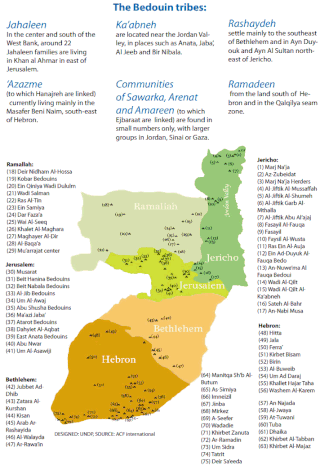
Palestinian Bedouin are a nomadic people who have come to form an organic part of the Palestinian people, characterized by a semi-pastoral and agricultural lifestyle. Originating from the Bi’r as-Saba’/Beersheba region in Southern Historical Palestine, Palestinian Bedouin are now predominantly concentrated in the South, the North and in the West Bank. Bedouins have lived in the Negev region, stretching from Gaza to the Dead Sea, since at least the fifth century. Remnants of Bedouin communities in the Gaza Strip include 5,000 individuals in Om al-Nasr, as of 2022. However in the Gaza strip, the number of nomadic Bedouin is shrinking and many are now settled.
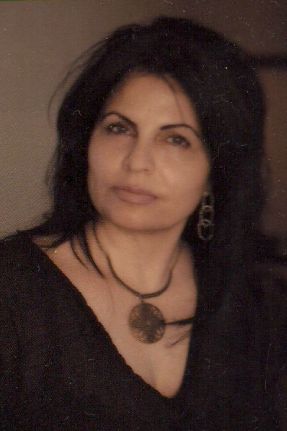
Nidaa Khoury is a lecturer at Ben-Gurion University in the Department of Hebrew literature. She is also the first Arab-Israeli poet to be included within the literature Bagrut curriculum in Israel.

A New Dawn in the Negev is a Bedouin-Jewish co-existence NGO that provides programming for Bedouin youth-at-risk. It is based in Rahat, the only Bedouin city in Israel. Over 600 Bedouin youth aged 5–18 per year participate in their programs.

Henriette Dahan Kalev is an Israeli Senior Lecturer of political science and the founder of the Gender Studies Program at Ben Gurion University. She is one of the founders of the Mizrahi feminist movement, and one of the leading theorists of Mizrahi feminism.

Maurice M. Roumani, born in Benghazi, Libya, is Professor of Politics and International Relations, Religion and Society of the Middle East and the Founder of the J. R. Elyachar Center for Studies in Sephardi Heritage at Ben-Gurion University of the Negev in Israel. He specializes in Ethnic Relations in Israel, Jews of Arab countries, the Middle East Conflict, and he is an expert on the History of Libyan Jews, Jewish-Muslim Relations and the impact of Holocaust policies in North Africa.
Amal Elsana Alh'jooj is a Bedouin feminist, peace activist, and community organizer known for her grassroots work promoting universal access to rights and social justice in the Global South. She is a Palestinian citizen of Israel.
References
- 1 2 "Making a Difference in the Desert: Sarab Abu-Rabia-Queder". www.culturalsurvival.org. Retrieved 28 April 2019.
- ↑ Eldar, Akiva (20 August 2009). "The University of Hard Knocks". Haaretz. Retrieved 28 April 2019.
- ↑ Abu Laban, Nadine (31 May 2021). "Ben-Gurion University awarded the first degree as a professor to an Arab researcher from the Negev". Haaretz. Retrieved 16 June 2021.
- ↑ "Prof. Sarab Abu-Rabia Queder Appointed BGU Vice President for Diversity and Inclusion". Ben-Gurion University of the Negev. Retrieved 16 July 2021.
- 1 2 3 "Dr. Sarab Abu Rabia-Queder". Women Across Frontiers Magazine. 10 August 2015. Retrieved 28 April 2019.
- 1 2 3 4 5 6 "Sarab". Ben-Gurion University of the Negev. Retrieved 28 April 2019.
- ↑ Leichman, Abigail Klein (8 March 2011). "Bedouin scholar blazes new trails". ISRAEL21c. Retrieved 25 January 2024.
- ↑ "Sarab Abu-Rabia-Queder". ORCID . Archived from the original on 12 April 2023. Retrieved 12 June 2023.
- ↑ Atshan, Sa’ed (1 October 2021). "The Anthropological Rise of Palestine". Journal of Palestine Studies. 50 (4): 3–31. doi:10.1080/0377919X.2021.1969806. ISSN 0377-919X. S2CID 244661676.
- ↑ "Sarab Abu-Rabia-Queder". Ben-Gurion University of the Negev . Archived from the original on 3 February 2023. Retrieved 12 June 2023.
Bibliography
- Abdo, Doctor Nahla (4 July 2013). Women in Israel: Race, Gender and Citizenship. Zed Books Ltd. ISBN 978-1-84813-957-2.